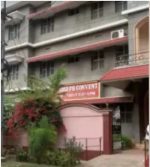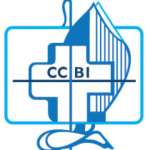Where no doctors have gone before, nuns have dared to.
They have reached an innovative primary health care program in a tribal area in Kalahandi district, Odisha, eastern India. It is the flagship program of Swasthya Swaraj Society, a registered society run by Sisters of the Holy Cross (Menzingen) or HCM. It is affiliated to the Franciscan Order, founded by Fr. Theodosius Florentini, OFM cap in Switzerland. The congregation was introduced in India in 1906.
Our vision is to create a society free from ill health, illiteracy and poverty, where every being lives healthy and happy, in harmony with the nature.
We are committed to work toward ‘Health for all’ following the principles of Alma Ata declaration of 1978 for ‘Health for All’ and the MDGs remain still a distant dream to this area for years to come.
Our focus is empowerment of the least and the last in the society so that they liberate themselves from the bondages of ill health, illiteracy and poverty in order to participate in the development of the nation. Justice, equity, integrity and compassion are our guiding principles
Participatory, empowering, respecting the noble values in the tribal culture, and human rights based approach will be taken in all the activities and programs.
Life in Kalahandi is difficult and is a mix of gross social and economic injustice which ‘is killing the people on a grand scale.’
The Thuamul Rampur block in Kalahandi district in Odisha is the most backward block in the district and is tribal belt where about 60 percent of the population belong to tribal, 30 percent to scheduled castes and the rest to other backward classes.
Thuamal Rampur has become almost a synonym for deprivation and poverty. Even after 66 years of India becoming independent country, this hilly and forested terrain with a population of around 72,000, continues to be without any communication facilities—no telephone, no signal of the mobile phones. Majority of the 320 villages remain unelectrified, all ‘kuchcha’ roads other than one asphalted road connect the block headquarters with the district headquarters which is 75 km away. It has gross illiteracy rate, only 28 percent women can read and write.
The people face lack of job opportunities, skills training and irrigation facilities along with displacement of the rural poor because of the land acquisition for mining. The area also witnesses migration of the rural poor to cities and other states in search of labor, rampant corruption and apathy of government officials.
What is most glaring is the miserable health status of the people and the acute shortage of healthcare in this block. There is an acute shortage of human resources in healthcare sector. This area is traditionally known to be a dense pocket of malaria, tuberculosis and leprosy is also rampant. Sickle cell disease, and under nutrition is high on the cards with frequent outbreaks of diarrhoea with high death toll here.
The local people badly need healthcare facilities. The public health system is almost non-functional except for the Accredited Social Health Activists (ASHAs) who do not have effective referral linkage and field level supervision. There are no facilities for inpatient care in this block other than a government Community Health Centre (CHC). However, unfortunately it almost always gives a vacant look due to acute shortage of human resources with 2 doctors and one staff nurse.
Most of the sub centers are visited only occasionally by the ANMs (Auxiliary Nurse Midwife) who are posted there and so the people are deprived of immunization services, antenatal care and other health services. The Infant Mortality Rate (IMR) as per the grossly incomplete government statistics in this block is 116/1000 live births and maternal mortality is reported as zero!
Moved by the misery of the poor during the past three year period of our observations and frequent visits to 30 villages in one panchayat (Kaniguma) in this block by a team of three nurses, we have decided to work toward improving the health status of the people in Thuamul Rampur and do something concrete about the manifestly severe injustice in healthcare. The ill health, disease burden and the frequent deaths of the young are the biological markers of the social and economic deprivation this people are facing.
The Health Team consists of doctors, senior nurse, senior laboratory technician, ANM, community health worker, driver cum social worker, and village community mobilizers.
We hope to provide healthcare services in 75 villages covering a population of around 26,000 people. The least and the last who are in the lowest rung of the society often need a helping hand and caring services to be able to rise and come up to the first step of the ladder of development and growth; providing of health care is seen from this perspective. Request for healthcare is a loud cry from the people.
Participation of the community and making use of the community’s knowledge and resources and building on it is given primary importance in all our programs. Empowerment of the community to enable them to take care of their health is our goal. Rights based approach in all the training so that people understand that health is their basic human right along with understanding their responsibility to promote health in their families and village communities.
Training and empowerment of women health workers (Swasthya Sathis): One Swasthya Sathis per village are selected in 75 villages. Training in both the clusters are initiated and going on.
These women are selected by the villagers themselves at the village meetings. These village health volunteers are married women living in the village and with service mentality, which the villagers identify. Literacy is not a criterion for their selection as adult female literacy rate is very low in these villages. They are trained by the organization by intensive and ongoing training, equip them with skills and knowledge and empower them with leadership and communication skills to impart the knowledge she gained to other women and be a primary health care provider in their respective villages.
The choice of Thuamul Rampur block for our health interventions was based on our shocking findings—the humanitarian crisis existing in this area with the large number of ‘silent’ or unnotified deaths taking place in the villages, the stark deprivation and neglect of the poor tribals by the political governance as they are the ‘dispensable crowd,’ the gross illiteracy.
It is risky, adventurous, tedious going to the interior villages and trying to empower the poorest of the poor in health care and providing them health care services. But we go forward with courage and determination that it is possible to achieve our goals. We do need the support and good will of all people.
(Sr Aquinas Edassery is a medical doctor working in Kalanandi district under Catholic Diocese of Berhampur, Odisha.)









